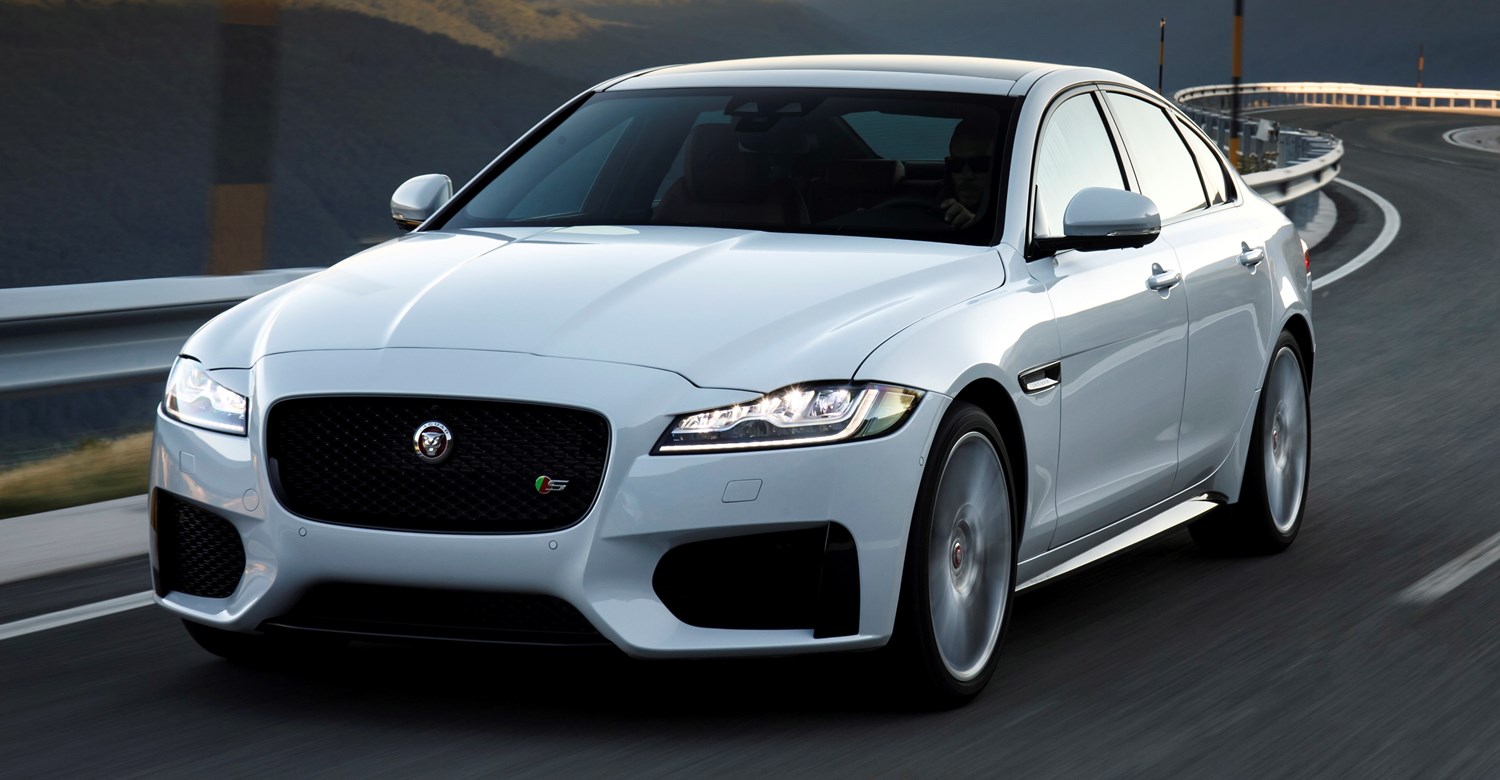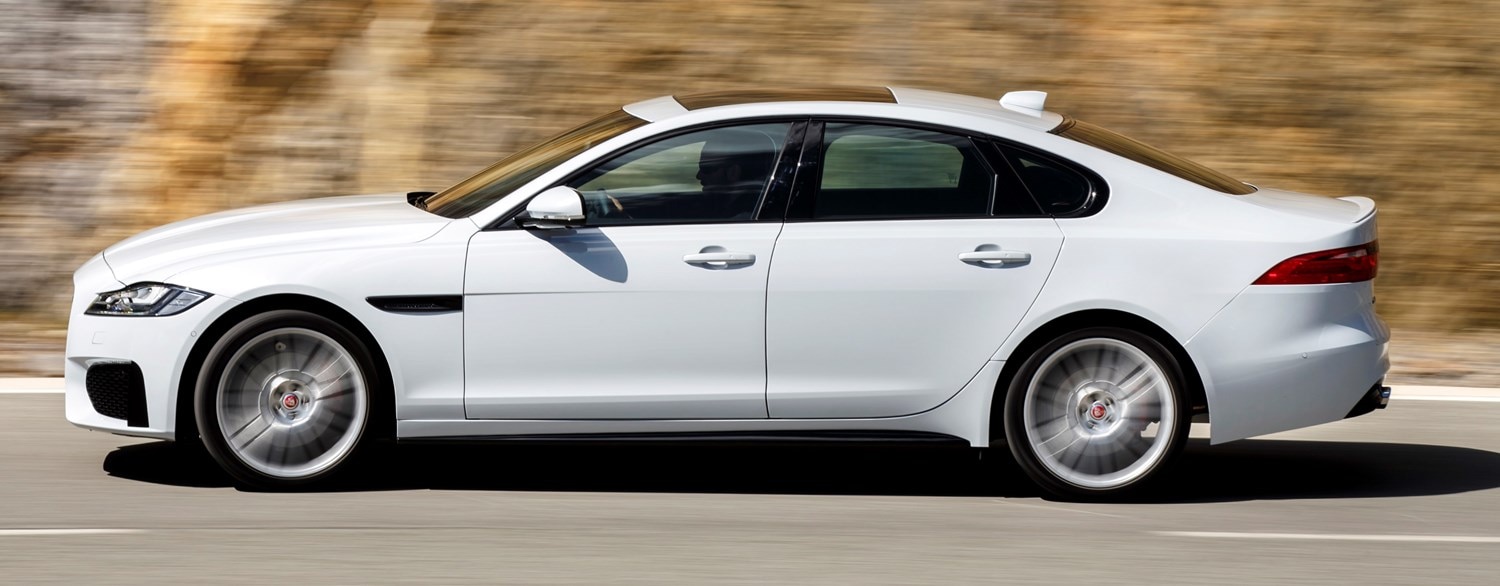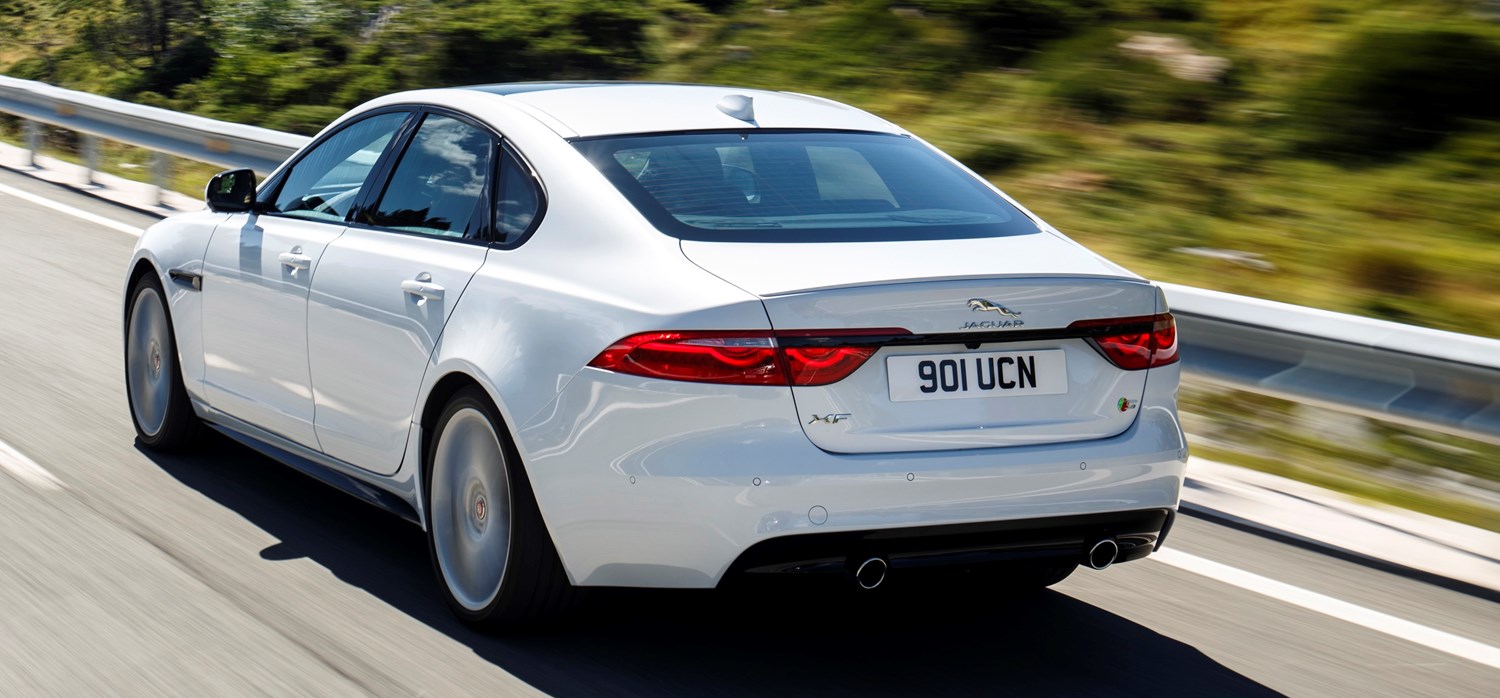Latest Model
The second generation of the XF follows on from the success of the XE. Made mainly from aluminium, the car is light and therefore agile to drive because of this. The XF now comes with a range of efficient engines, something the first-generation model lacked.
Jaguar’s latest addition to the XF is the second generation XF Sportbrake. The specs and engines largely remain the same as the saloon model, although the 3.0-litre petrol engine will not make its way to the UK. The model is already available to order, with deliveries expected to start at the end of 2017.
Value for money
The XF represents good value for money, undercutting rivals from Audi, BMW and Mercedes by at least £1,000, starting at £32,490. The XF also has good levels of standard equipment, including 17-inch alloy wheels, xenon headlamps, leather seats, in-control apps, cruise control with intelligent speed limiter and a rear parking aid available as standard on the XF Prestige trim level.
The XF represents good value for money used too. There are plenty of early 2008-9 cars available with the 2.7-litre diesel engine for under the £10,000 mark. However, we would recommend the later 2.2-diesel engine which is much better on fuel and doesn’t compromise on performance too much.
2012 examples with around the 50,000 miles can be picked it from around £12,500 which represents exceptional value for money, and would make a great used purchase. The only two things we would advise avoiding are those cars with 17-inch wheels and that don’t have full leather seats.
Looks and image
The XF is undisputedly a stunning looking vehicle, which has helped Jaguar escape from the ‘old-man’ image it always struggled with in the past. Put simply, you will no longer receive eye-rolls when you say you own a Jaguar. The first problem for Jaguar was adjusting the XE chassis to the size of the XF, a move that ultimately shaped its proportions and extremely similar stance to the XE – no bad thing.
The new XF also unmistakably features design cues from the F-Type, particularly at the rear. The first-generation XF was a good-looking car, but the latest model has certainly moved the game forward even more in terms of design.
The interior is also a great place to be, both in terms of comfort and to look at. The XF also features a great eight-inch display as standard, which can also be upgraded to a 10.2-inch screen. The thing you will notice if you are familiar with the Jaguar brand is just how similar the interior is to the XE and XJ.
Jaguar gets the balance just right between agility and comfort. While the XF may not quite have the dynamic capability of a 5-Series, it is still a good car to drive. For those wanting adaptive suspension, Jaguar’s Adaptive Dynamics is only available on certain models, so it is definitely worth trying the car with and without the suspension to work out if you think it is worth paying the premium, all depending on personal suspension preferences.





